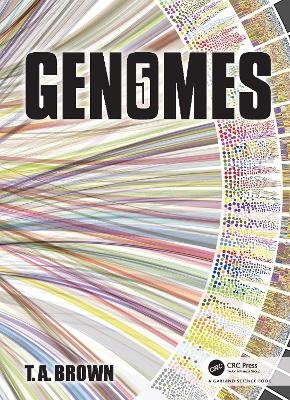
Genomes 5
CRC Press (Verlag)
978-0-367-67866-1 (ISBN)
- Titel z.Zt. nicht lieferbar
- Versandkostenfrei
- Auch auf Rechnung
- Artikel merken
Genomes 5 has been completely revised and updated. It is a thoroughly modern textbook about genomes and how they are investigated. As with previous Genomes editions, techniques come first, then genome anatomies, followed by genome function, and finally genome evolution. The genomes of all types of organism are covered: viruses, bacteria, fungi, plants, and animals, including humans and other hominids.
Genome sequencing and assembly methods have been thoroughly revised to include new developments in long-read DNA sequencing. Coverage of genome annotation emphasizes genome-wide RNA mapping, with CRISPR-Cas 9 and GWAS methods of determining gene function covered. The knowledge gained from these techniques forms the basis of the chapters that describe the three main types of genomes: eukaryotic, prokaryotic (including eukaryotic organelles), and viral (including mobile genetic elements). Coverage of genome expression and replication is truly genomic, concentrating on the genome-wide implications of DNA packaging, epigenome modifications, DNA-binding proteins, non-coding RNAs, regulatory genome sequences, and protein-protein interactions. Also included are examples of the applications of metabolomics and systems biology. The final chapter is on genome evolution, including the evolution of the epigenome, using genomics to study human evolution, and using population genomics to advance plant breeding. Established methods of molecular biology are included if they are still relevant today and there is always an explanation as to why the method is still important.
Genomes 5 is the ideal text for upper-level courses focused on genomes and genomics.
Key Features
A highly accessible and well-structured book with chapters organized into four parts to aid navigation
Superb artwork illustrates the key concepts and mechanisms
Each chapter has a set of short-answer questions and in-depth problems to test the reader’s understanding of the material
Thoroughly up to date with references to the latest research from the 2020s
Terry Brown is professor of Biomolecular Archaeology at Manchester University. As well as writing the previous editions of Genomes, he is the author of Introduction to Genetics: A Molecular Approach (Garland 2011) and 5 editions of DNA Cloning Analysis (Wiley Blackwell). He is also an experienced teacher of genetics.
PART 1: HOW GENOMES ARE STUDIED 1. Genomes, Transcriptomes and Proteomes 2. Studying DNA 3. Mapping Genomes 4. Sequencing Genomes 5. Genome Annotation 6. Identifying Gene Functions PART 2: GENOME ANATOMIES 7. Eukaryotic Nuclear Genomes 8. Genomes of Prokaryotes and Eukaryotic Organelles 9. Virus Genomes and Mobile Genetic Elements PART 3: HOW GENOMES ARE EXPRESSED 10. Accessing the Genome 11. The Role of DNA-Protein Interactions in Genome Expression 12. Transcriptomes 13. Proteomes 14. Genome Expression in the Context of Cell and Organism PART 4: HOW GENOMES ARE REPLICATED AND EVOLVE 15. Genome Replication 16. Recombination and Transposition 17. Mutations and DNA Repair 18. How Genomes Evolve
| Erscheinungsdatum | 12.08.2022 |
|---|---|
| Zusatzinfo | 35 Tables, color; 517 Line drawings, color; 18 Halftones, color; 11 Halftones, black and white; 546 Illustrations, color |
| Verlagsort | London |
| Sprache | englisch |
| Maße | 210 x 280 mm |
| Gewicht | 1880 g |
| Themenwelt | Informatik ► Weitere Themen ► Bioinformatik |
| Naturwissenschaften ► Biologie ► Genetik / Molekularbiologie | |
| Naturwissenschaften ► Biologie ► Zellbiologie | |
| ISBN-10 | 0-367-67866-7 / 0367678667 |
| ISBN-13 | 978-0-367-67866-1 / 9780367678661 |
| Zustand | Neuware |
| Informationen gemäß Produktsicherheitsverordnung (GPSR) | |
| Haben Sie eine Frage zum Produkt? |
aus dem Bereich


